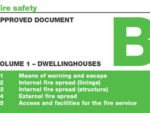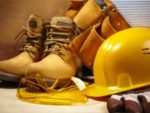It is vital that you have access to and understand the building regulations, planning guidelines and safety principles for the project that you are planning to tackle. They are lengthy, boring but very important, so there is no need to try and remember them – you just need to know where the information is when you need it. That is why we have put all this information into one section, ready for when you need it.
What are Building Regs or Building Regulations?
The Building Regs are a set of standards which govern the design and construction of building, including domestic buildings. They aim to ensure that buildings are safely built and will remain safe and healthy for the users and inhabitants. They are not necessarily rigid rules but principles that guide the construction process and if an equally suitable or acceptable solution is found it can be used, with approval from the building control surveyor.
The Building Regulations are updated regularly, and the government publishes ‘Approved Documents’ which outline how the regulations can be met. They are relatively accessible, but we have summarised them all in our Building Regulations section. There are different regulations for England, Wales and Scotland, where they are called Building Standards, although the differences are not huge.
The building regs also control the way fuel is use and conserved in buildings, and important considerations such as access for the disabled.
While adherence to the building regulations is controlled by the local authority, it is also possible to get an authorised private surveyor to conduct the required checks and give the appropriate sign off.
What is Planning Permission?
Planning Permission is a legal process for deciding if a development should be allowed to go ahead. The aim is to control and manage the way that our countryside and towns are developed, for aesthetic, access and environmental reasons.
The Planning legislation is controlled by the government, and the devolved regional governments, but it is applied by the local authority. All developments need planning approval, however this can be avoided if the development is considered a Permitted Development. Permitted developments are a form of general planning permission granted from Parliament (rather than the local authority).
If work has been carried out, retrospective planning will need to be sort; all buildings need planning approval or will face the prospect of being demolished. For more information see our planning section.
The Difference Between Planning Permission and Building Regulations – Do You Need Both?
In a word, ”Yes“. They are separate systems and separate applications for approval need to be made to both the planning department at your local authority and the building control.
As we have seen sometimes you will not need one or the other, depending on the work planned. If it is a permitted development, it may well still need building regulations sign off. It is less likely that you will need planning approval with no building regulations approval, such as for some driveway projects for example.
If you are in any doubt you should contact both your local planning authority and your local building control office.
Project and Property Management
If you own a property you will know that there is a lot of work involved with all aspects of it; buying, selling and maintaining it. Then if you want to make any changes and improvements you will need to manage these carefully. In this section we cover all aspect of managing your property and any project that you might be planning.
Home Improvement Safety Information and DIY Health and Safety
While DIY and home improvement is a very popular pastime, there are risks which you need to be aware of. After all around 40 construction workers are killed every year through accidents. The main dangers are:
- Slips, trips and falls
- Lifting and handling
- Falls from height
- Struck by objects
There are other dangers to, such as working with asbestos, which you should be aware of.
We provide practical and helpful advice on how you should stay safe while doing your DIY; please read it when you get a chance and don’t become a statistic.




